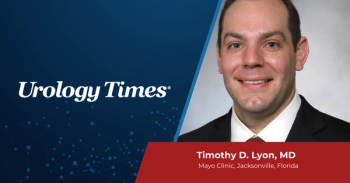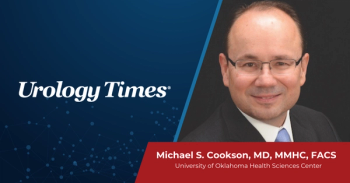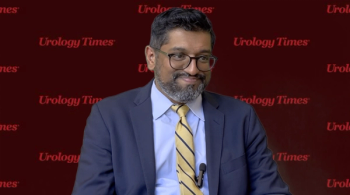
What urologists can do to make their institutions more inclusive
By identifying trends in race and ethnicity of academic urologists, this study poses as an opportunity for future intervention.
There are several factors that attribute to the racial and ethnic disparities within the urologic workforce. A recent Urology study1 led by Efe C. Ghanney Simons, MD, sheds light specifically on the disparities seen at each stage of the educational pipeline. By identifying trends in race and ethnicity of academic urologists, this study poses as an opportunity for future intervention. Ghanney Simons is a urology resident at University of California, Los Angeles.
Please discuss the background for this study.
This work was driven by the climate in the United States in the year of 2020. At that time, the world was at an inflection point. This was a time where we all had a heightened awareness or recognition of racial disparities within the United States. This was driven in part by the extrajudicial killings of Black and Brown people, particularly of Mr. George Floyd, as well as the findings in disparities in outcomes during the COVID-19 pandemic, which we're still currently experiencing. Differences or disparities that were noticed across race-ethnicity lines were with respect to hospitalizations, along with the rates or risk of mortality and morbidity, secondary to the COVID-19 disease.
Now, within the world of urology itself, we have the opportunity to examine disparities across 3 main categories. First, disparities across urologic health outcomes. Second, disparities across health care delivery, so here I'm speaking specifically to the idea of differences in the way we deliver care across different health care systems or to different patient populations. One can imagine differences across the VA system, county systems, and private hospitals, that all fall under 1 umbrella. And lastly, disparities within the world of the health care workforce. Here, I'm speaking of the differences in racial representation in the urologic workforce.
What we had chosen to do was to seek data from the AAMC [Association of American Medical Colleges], as well as data from AUA, examining the rate and representation of race and ethnicity all the way back to the United States population, and following each step along the way of what we had defined as the academic pipeline. We're looking at representation in high schools, those who matriculate into high school and graduate, those who go into college and graduate, those who choose to apply to medical school, and those who successfully get in, as well as those who graduate, those who elect to apply to urology, those who successfully match, representation across our residents, those who become practicing urologists, and lastly, those who choose to stay in the academic world within the field of urology. We also examined trends over time in the urology applicant population, the urology resident population, and the urology faculty population.
What were some of the notable findings? Were any of them surprising to you and your co-authors?
In terms of findings, there were a number of interesting points, and the goal of this research endeavor was to really set forth the background information that would guide the creation of targeted interventions. We thought that a problem that was not identified would be more likely to be a problem that would remain unsolved. And so, in order to start to make a dent in this issue of representation in urology, we wanted to really look at areas where we would have the largest impact if the world of urologists were to invest in these transition points.
For Latinx colleagues, the largest decline was noted between the college matriculants and the college graduates. It's easy to say to ourselves, "We're urologists, and our scope of influence is this small, this limited." If we truly were ascribing value to representation, then it is incumbent on us as a community to seek ways to invest in the support of Latinx students at the college level in order to ensure that we have higher graduation rates, and in order for that cohort of integrated individuals to feed into our pipeline of future urologists.
For those who identify as Black or African Americans, which is myself, the largest decline was noted between the high school and college transition. And again, there's a sharp decline as it pertains to those who were applying to medical school and those who actually got into medical school. This speaks to either an issue with preparation for medical school applications or the preparation for the medical school application process, or a difference in the criteria by which we select for medical students.
What are some possible reasons behind the attrition seen in this study?
A large part of recruitment and retention is really dependent on this idea of structured mentorship or sponsorship, so that requires an investment in the individuals we're hoping to draw into our field. Secondly, in regard to potential interventions or things that urologists can do, paying close attention to how early we're exposing students—and this can be streamed from the high school, college, and medical school level—to such an awesome field such as ours. Are we being intentional about drawing them in to shadow in the OR to give them a glimpse of what our life looks like, in order for them to make that decision early enough that they are prepared to apply successfully into the field of urology?
What steps can be taken to help diversify the urologist workforce?
We all know that in order to apply to urology, there's certain characteristics that are deemed "desirables," particularly certain standardized test scores. As we all attempt to prepare students adequately for the urology application, we also must ask ourselves, "Are we giving students the opportunity to engage in research that is feasible to be completed in a timely fashion such that they have research publication in time for the application?" That is something that we can as urologists be more intentional about: crafting research opportunities that would have a product by the time that student is applying.
The other thing to think about is this concept of standardized scores. Now, this is a contentious topic, and there are various positions that are taken. While standardized tests have their place, the use of a standardized test as a cutoff in order to ensure entry into the field of urology must make us consider the reason why the standardized tests were created, what they were designed to test for, and the implications of their use. Now, one might think that this dialogue is unnecessary given that step 1 is going to be pass-fail, so we must recognize that step 2 may be used in the same fashion. This conversation is important.
There is the potential to expand the range of characteristics that are ascribed value. So, are we ascribing value to things, such as advocacy work, that do not form neatly within our application rubric? Or how about things such as mentorship, distance traveled, or other barriers that an individual may have had to overcome in order to get to the same place as their peers who may have had more resources? This concept of characterizing or capturing distance traveled is what we tend to want to quantify when we talk about holistic review, so these are some ways in which we may be able to ensure the recruitment of individuals so that we may one day get to a place where the urology field or practitioners will look like the patient population we serve.
What is the take-home message for the practicing urologist?
There have been questions as to whether there is merit to diversity, and I could go on and on about the merits to having a diverse workforce. Suffice it to say that research has demonstrated that a diverse provider population does translate to improved patient outcomes, does translate into improved experiences for trainees with regards to their cultural competence, being able to work with a wide range of patients and of a wide variety of backgrounds, and does translate to improvement in the quality of research that is conducted. And so, diversity efforts do not benefit just 1 subgroup of individuals. It indeed benefits us all as a society. This work isn't for one, it is certainly for all. I do hope that the urology community takes up the mantle and really begins to do the difficult work of restructuring our establishments and our institutions to allow for a more inclusive society.
Reference
1. Simons ECG, Arevalo A, Washington SL, et al. Trends in the racial and ethnic diversity in the US urology workforce. Urology. Published online April 16, 2021. doi:
Newsletter
Stay current with the latest urology news and practice-changing insights — sign up now for the essential updates every urologist needs.


















